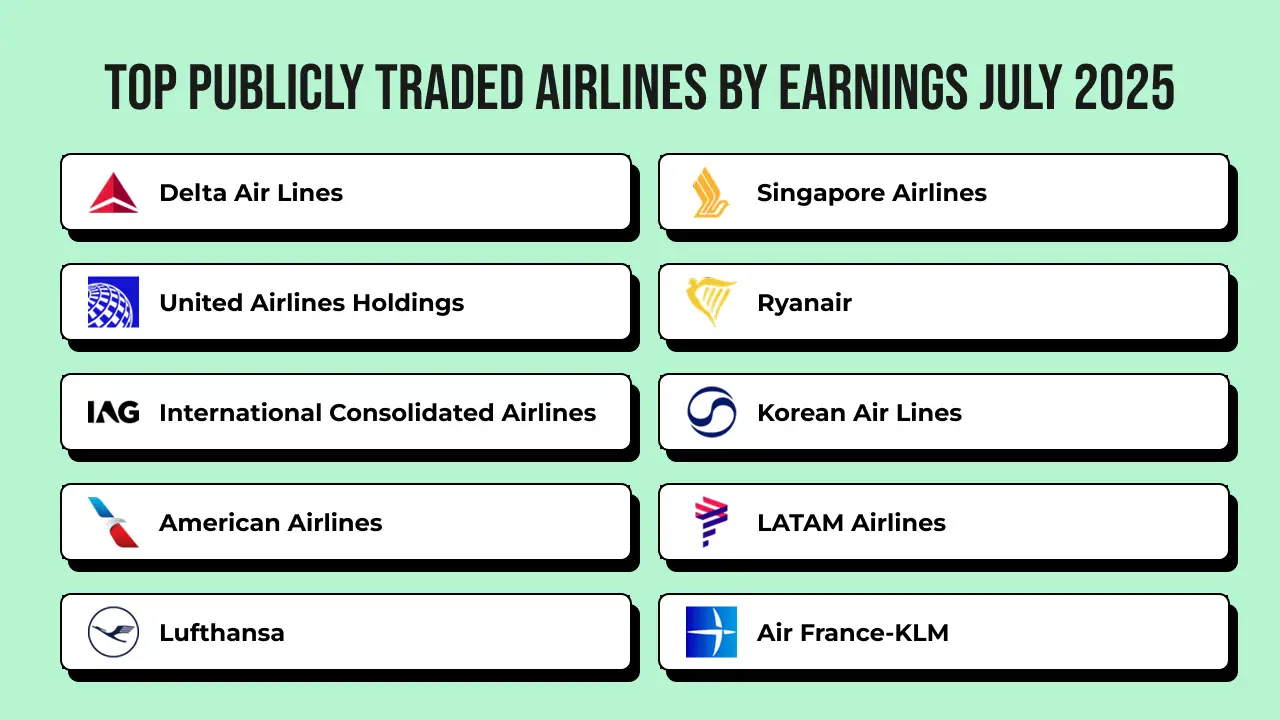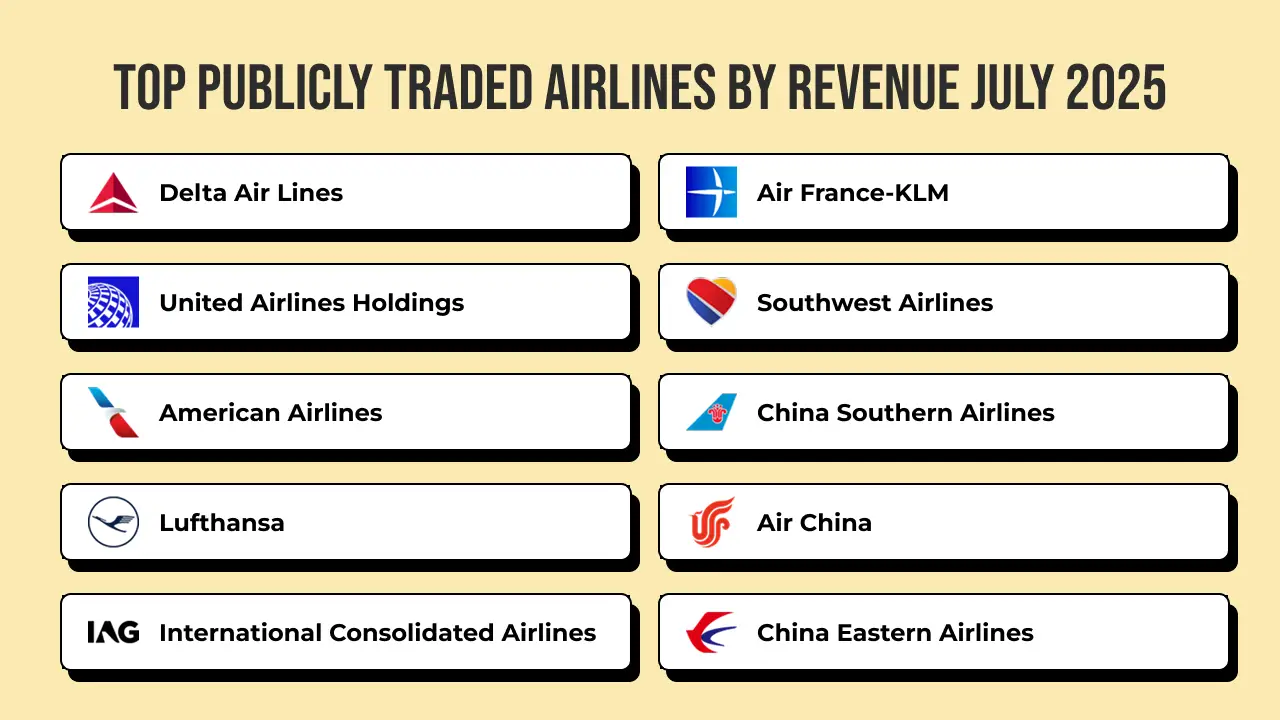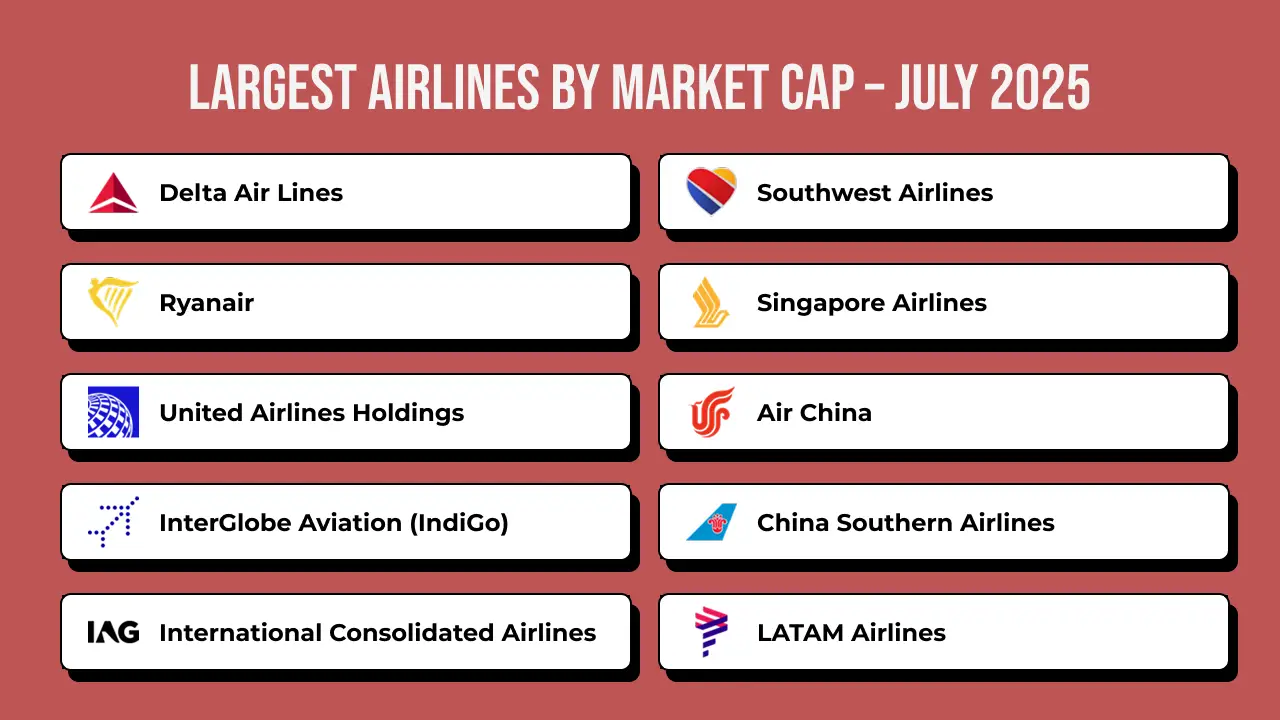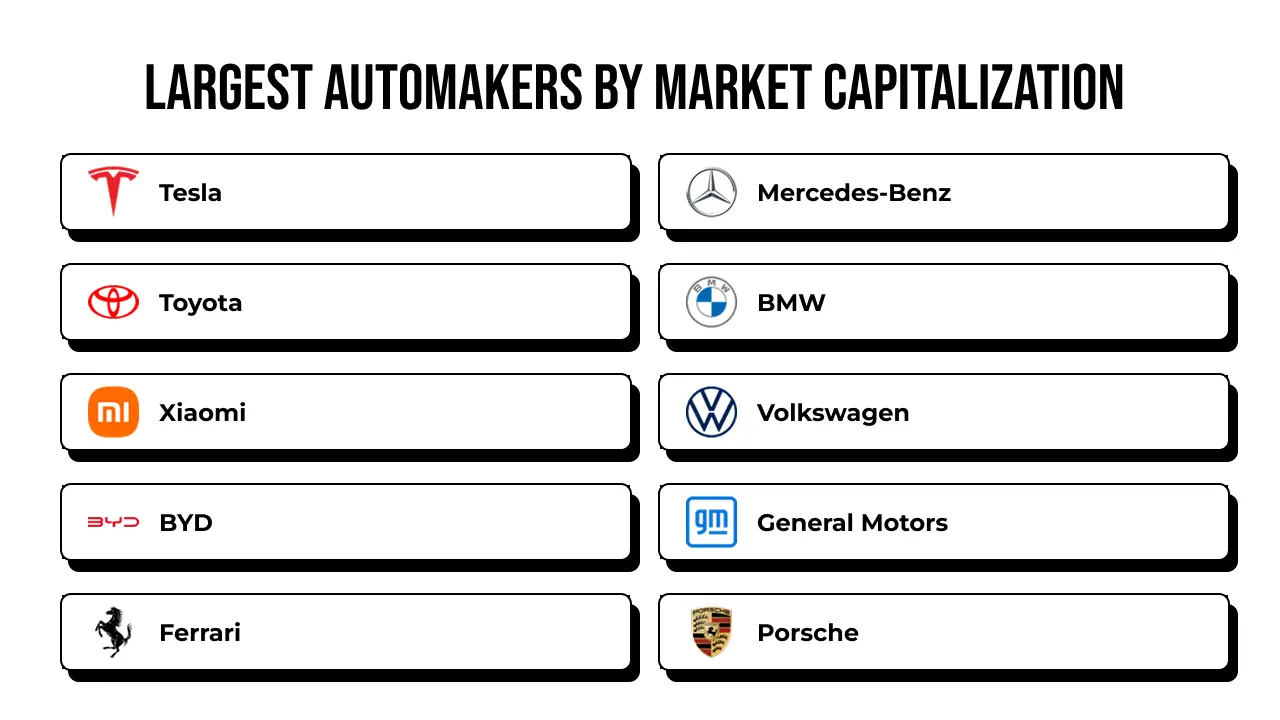The global aviation industry continues to demonstrate remarkable resilience and growth momentum as we progress through 2025, with several major carriers posting impressive earnings figures that reflect the sector’s ongoing recovery from previous challenges. The latest financial data reveals a competitive landscape dominated by established legacy carriers, while also highlighting the diverse geographical distribution of profitable airline operations across multiple continents.
Delta Air Lines emerges as the clear leader in the earnings race, posting remarkable revenues of $6.36 billion, cementing its position as one of the world’s most financially robust carriers. Close behind is United Airlines Holdings with $6.12 billion in earnings, demonstrating the continued strength of major U.S. carriers in capturing market share and maintaining profitability. The third position is held by International Consolidated Airlines Group, the parent company of British Airways and Iberia, with $4.23 billion in earnings, representing the strongest European performance in the top tier.
Top 10 Airlines by Earnings (July 2025)
| Rank | Company Name | Earnings | Country |
|---|---|---|---|
| 1 | Delta Air Lines | $6.36 B | USA |
| 2 | United Airlines Holdings | $6.12 B | USA |
| 3 | International Consolidated Airlines | $4.23 B | Spain |
| 4 | American Airlines | $2.78 B | USA |
| 5 | Lufthansa | $2.39 B | Germany |
| 6 | Singapore Airlines | $2.36 B | Singapore |
| 7 | Ryanair | $1.97 B | Ireland |
| 8 | Korean Air Lines | $1.93 B | South Korea |
| 9 | LATAM Airlines | $1.86 B | Chile |
| 10 | Air France-KLM | $1.86 B | France |
The dominance of American carriers is particularly noteworthy, with three of the top four positions occupied by U.S. airlines. Delta, United, and American Airlines collectively represent over $15 billion in combined earnings, showcasing the strength of the domestic U.S. market and these carriers’ ability to optimize their route networks and operational efficiency. This performance reflects successful cost management strategies, strategic route planning, and the benefits of a robust domestic travel market that has shown consistent demand patterns.
European carriers also demonstrate strong performance in the rankings, with Lufthansa securing the fifth position at $2.39 billion, followed closely by premium carrier Singapore Airlines at $2.36 billion. The presence of budget carrier Ryanair in the seventh position with $1.97 billion earnings illustrates how low-cost carriers continue to capture significant market share through competitive pricing strategies and operational efficiency. Air France-KLM rounds out the top ten with $1.86 billion, tying with LATAM Airlines and highlighting the global nature of successful airline operations.
The earnings data reveals interesting regional patterns, with Asian carriers like Korean Air Lines and Singapore Airlines maintaining strong financial performance, while Latin American representation through LATAM Airlines demonstrates the growing importance of emerging markets in global aviation. These figures reflect not only successful business strategies but also the carriers’ ability to adapt to changing travel patterns, optimize fuel efficiency, and maintain competitive advantage in an increasingly complex global marketplace. The diversity in the top ten rankings suggests a healthy, competitive industry with multiple successful business models across different geographical markets and operational approaches.
The financial strength demonstrated by these leading carriers positions them well for continued expansion, fleet modernization, and service enhancement initiatives that will likely drive future growth in the aviation sector. As the industry continues to evolve with changing consumer preferences and technological advancements, these earnings leaders are establishing the foundation for sustained competitive advantage in the global aviation marketplace.











